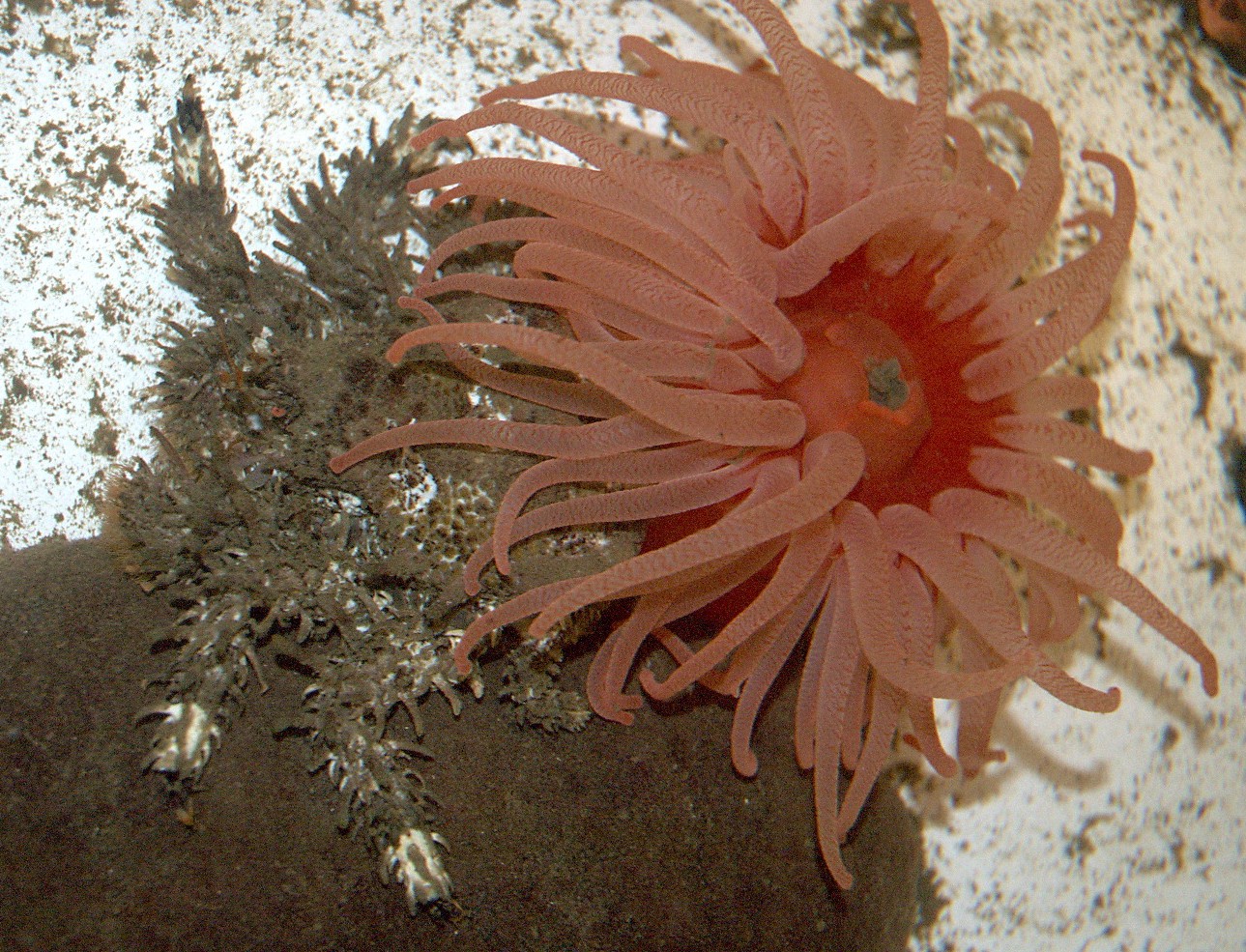Phyllolithodes papillosus Brandt, 1849Common name(s): Heart crab, heart lithodid, papillid crab, flat spined triangle crab, spiny-leg lithode crab |
|
| Synonyms: Phyllolithodes bicornis, Petaloceras bellianus | 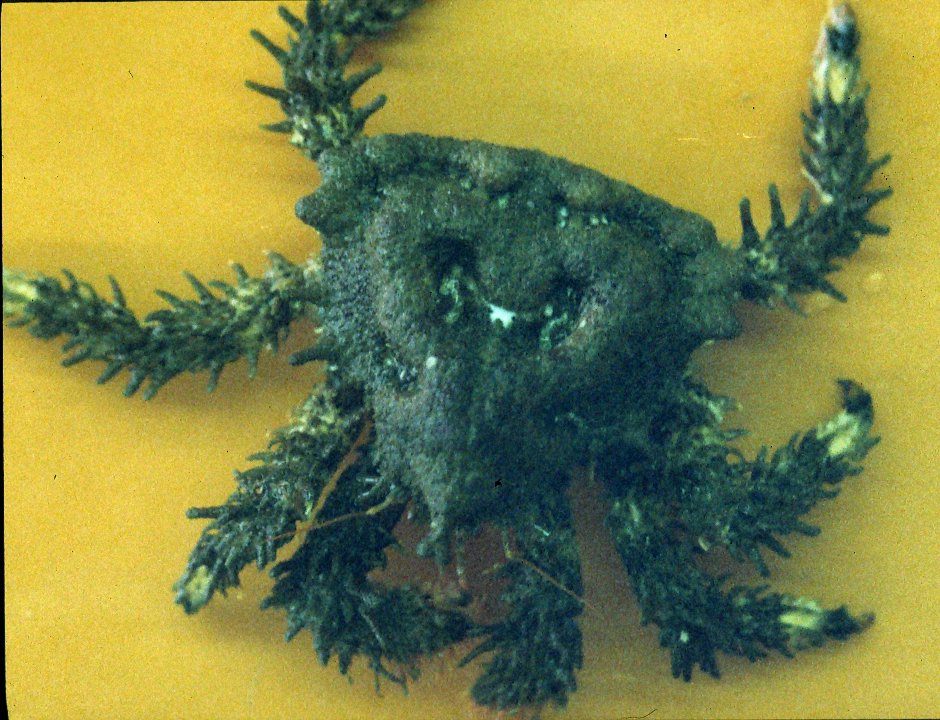 |
| Phylum Arthropoda
Subphylum Crustacea Class Malacostraca Subclass Eumalacostraca Superorder Eucarida Order Decapoda Suborder Pleocyemata Infraorder Anomura Family Lithodidae |
|
| Phyllolithodes papillosus subtidal from Sares Head. About 5 cm carapace width. | |
| (Photo by: Dave Cowles, July 2000) | |
How to Distinguish from Similar Species: Rhinolithodes wosnessenskii also has a triangular carapace with a depression in the middle but the legs are covered with setae and sharp spines, its rostrum is not divided into two blunt lobes, and the carapace has no tubercles on the dorsal surface but has sharp spines along the margin.
Geographical Range: Dutch Harbor, Alaska to San Miguel Island, California
Depth Range: Subtidal to 183 m
Habitat: Around rocks in deep water, especially with currents.
Biology/Natural History: This species is not frequently encountered. Captive individuals readily eat urchins. May also eat sponges. This species often shelters under the anemone Cribrinopsis fernaldi, especially after molting (photo) (photo). Juveniles can (rarely) be found under intertidal rocks.
Genus Phyllolithodes is characterized by large abdominal
plates with
softer centers (photo)
| Return to: | |||
| Main Page | Alphabetic Index | Systematic Index | Glossary |
References:
Dichotomous Keys:Carlton, 2007
Coffin, 1952
Flora and Fairbanks, 1966
Hart, 1982
Kozloff 1987, 1996
Wicksten, 2009
General References:
Harbo,
1999
Jensen,
1995
Johnson
and Snook, 1955
Lamb
and Hanby, 2005
Scientific
Articles:
General Notes and Observations: Locations, abundances, unusual behaviors:
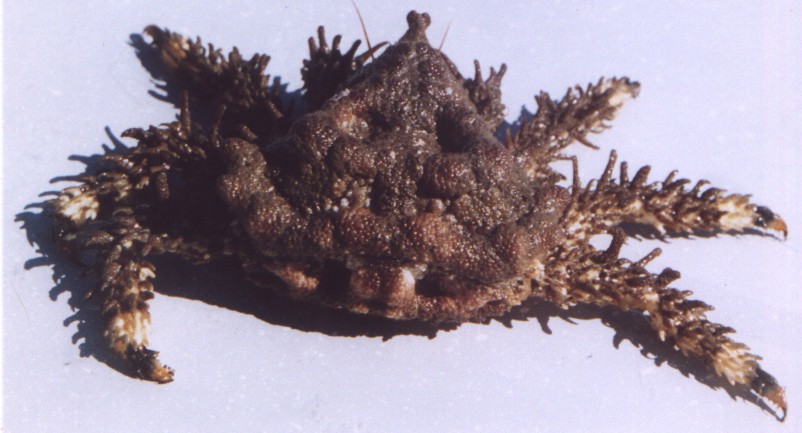
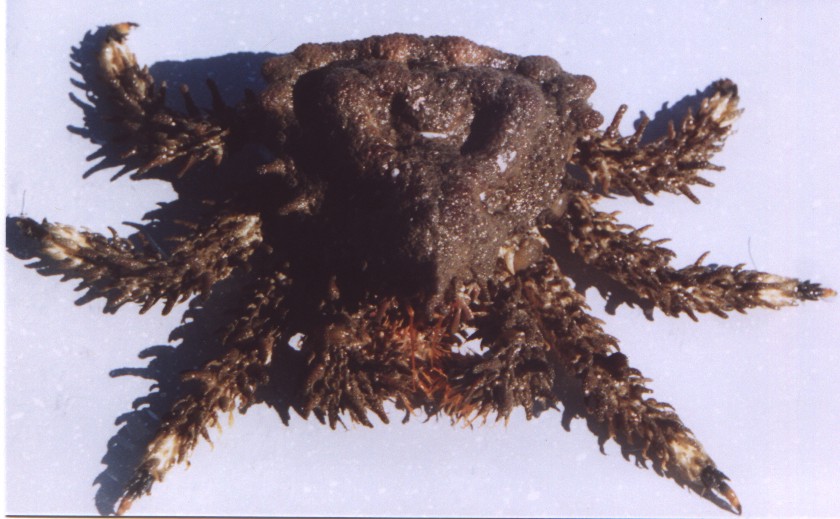
Several more views of the species. Photo by Dave Cowles, July
2000. Captured subtidally at Sares Head.
Phyllolithodea papillosus often takes
refuge under the crimson
anemone Cribrinopsis
fernaldi.
Photo by Dave Cowles, July 2008
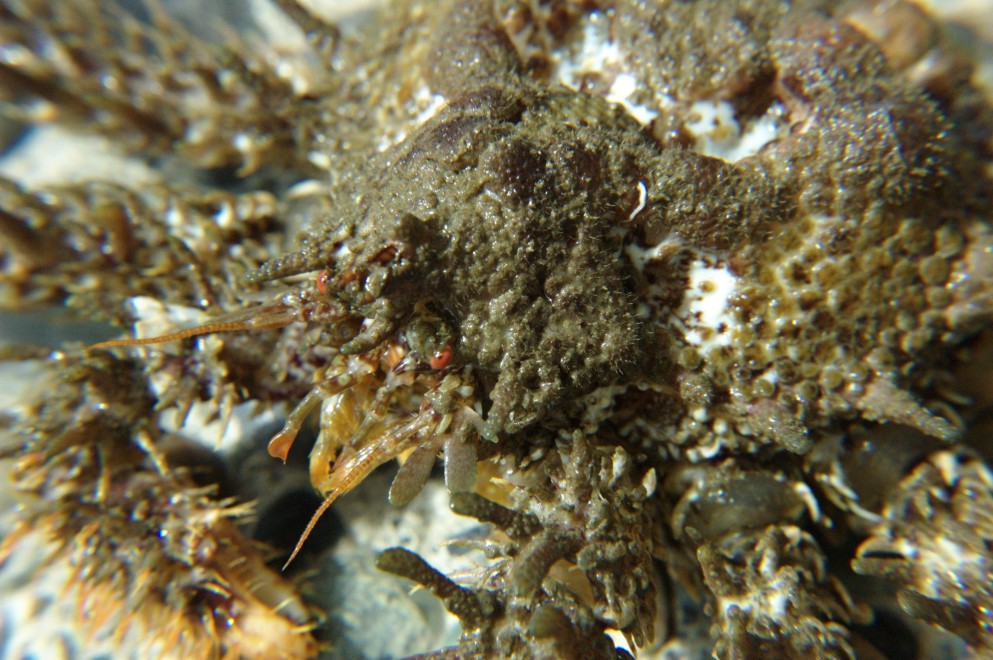
This view of the face shows the red eyes, the flattened scales, and
the blunt dorsal
and ventral
lobes on the rostrum.
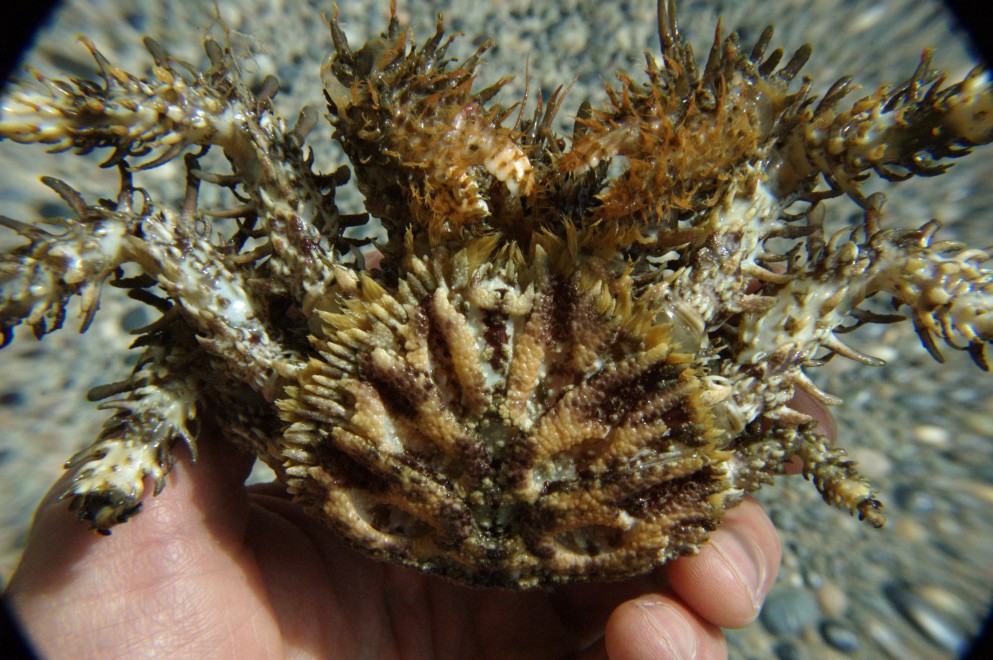
As in many Lithodid crabs, the abdomen is broad and
sculptured.
The abdominal plates are softer in the middle. Note also the
long
bristly setae on the chelae.
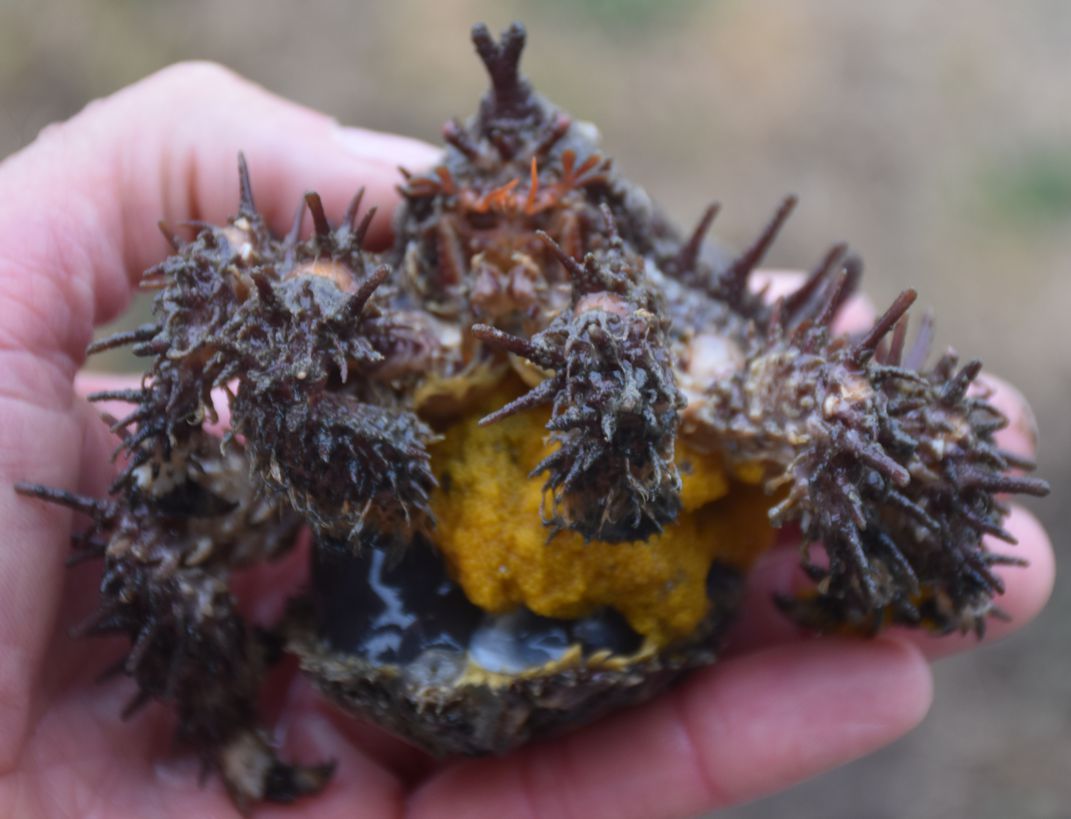
This female was carrying eggs. Photo by Dave Cowles, July 2018
| Several views of an individual captured at 12 m depth on Sares Head, June 2020. Carapace width 7 cm, carapace length 6.5 cm including rostrum. Photos by Dave Cowles |
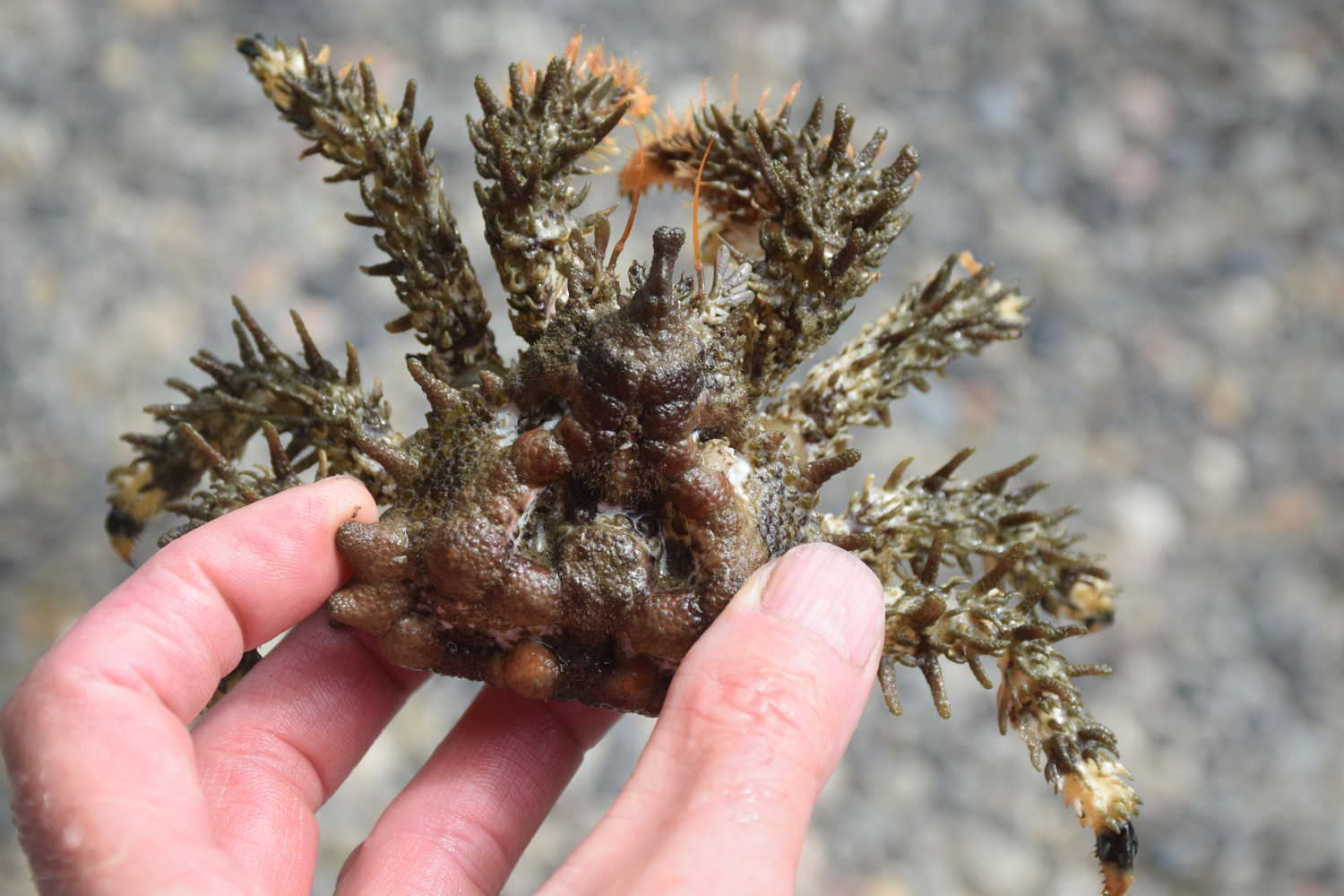 |
| Above: Dorsal view. Below: Ventral view |
 |
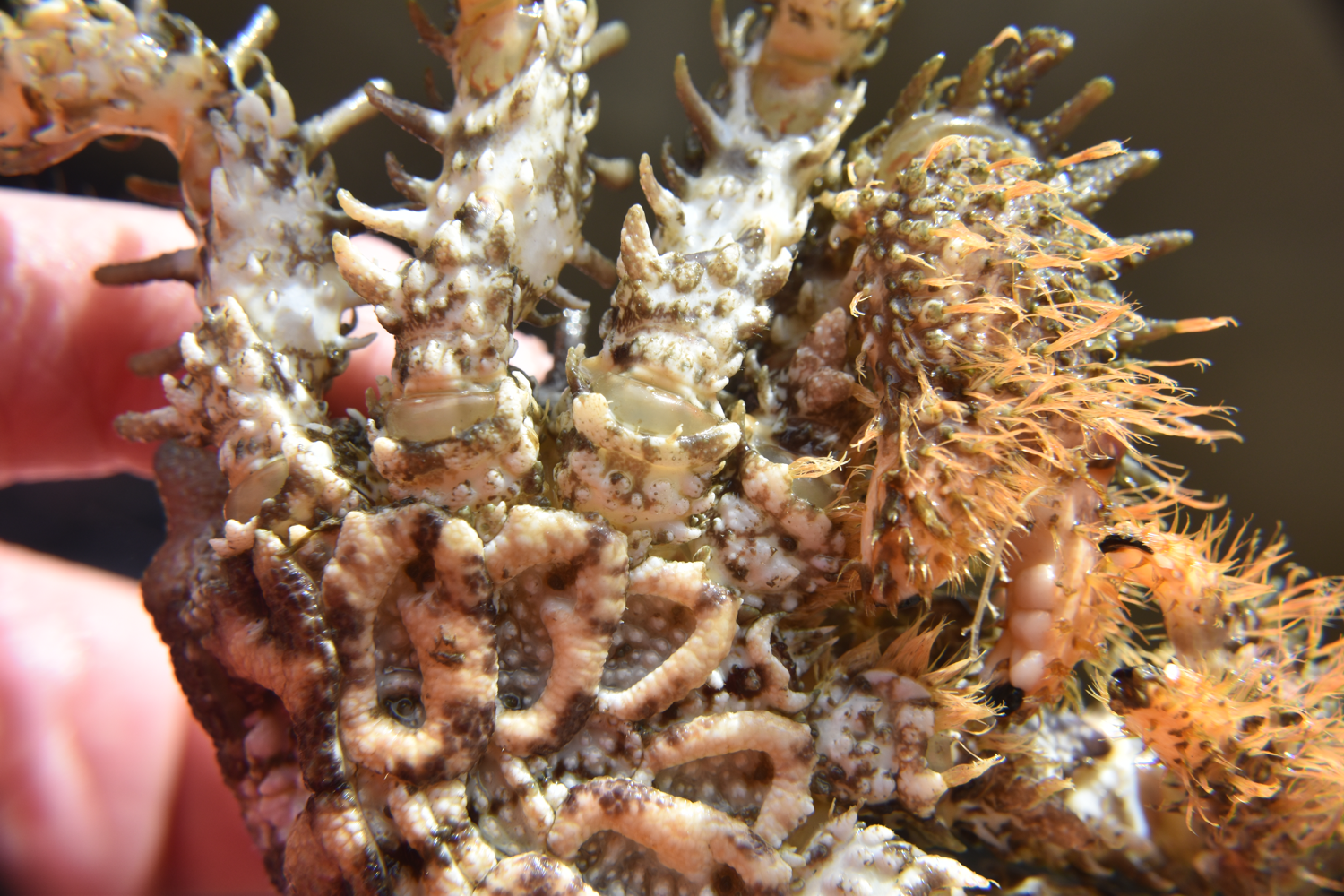 |
| Above: Ventral view with chelae. Below: Lateral view |
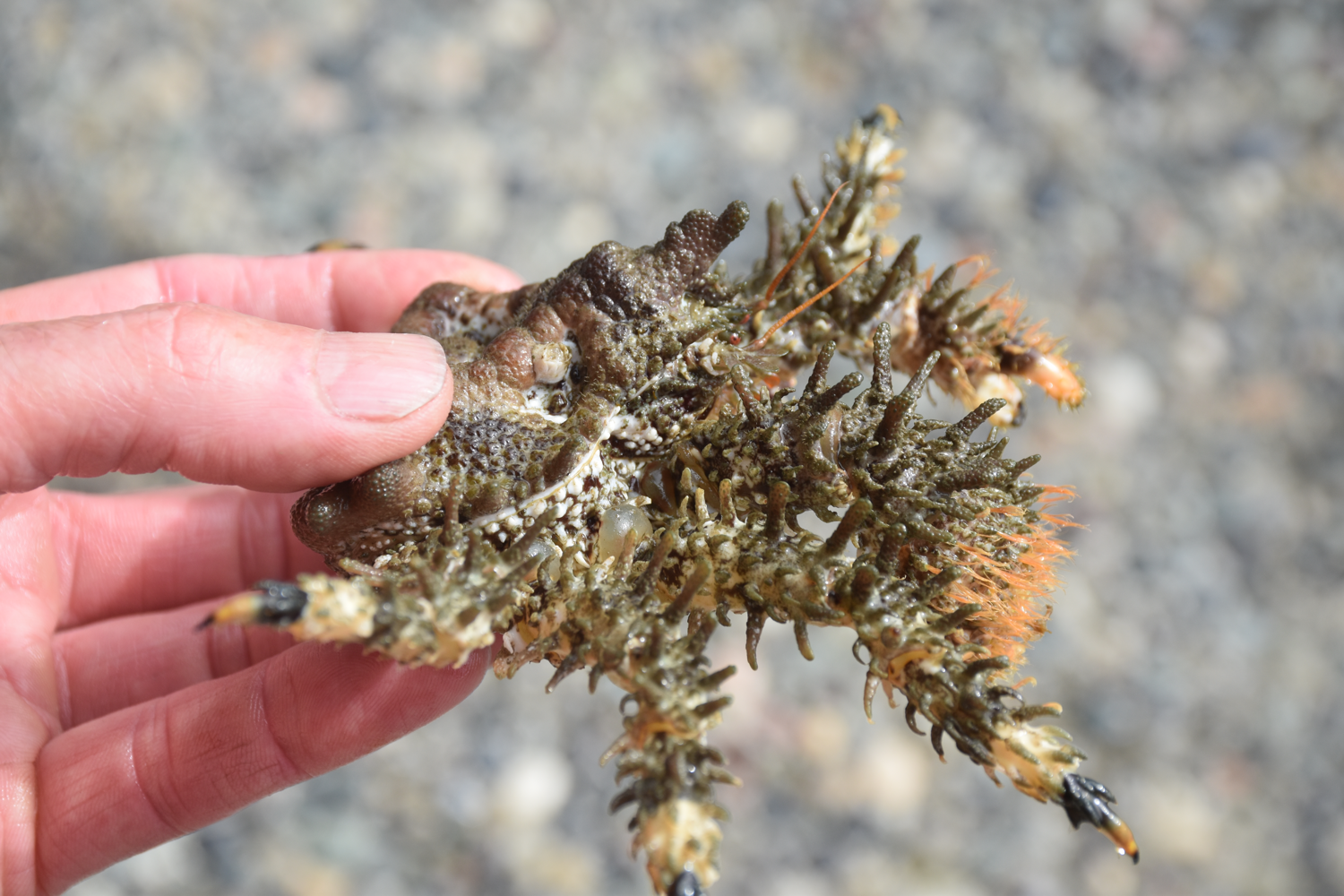 |
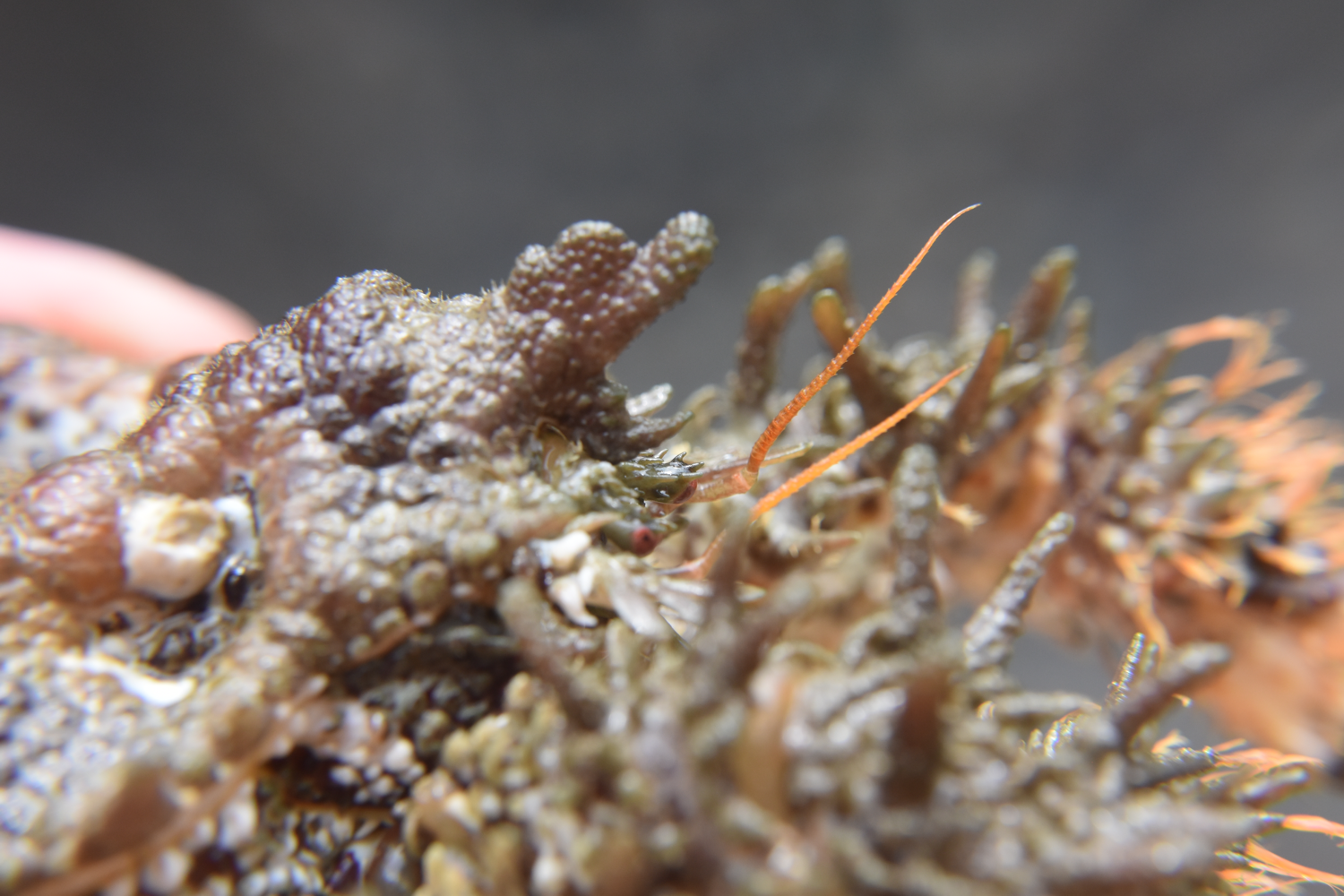 |
| Lateral view of head and rostrum. |
Authors and Editors of Page:
Dave Cowles (2005): Created original page
